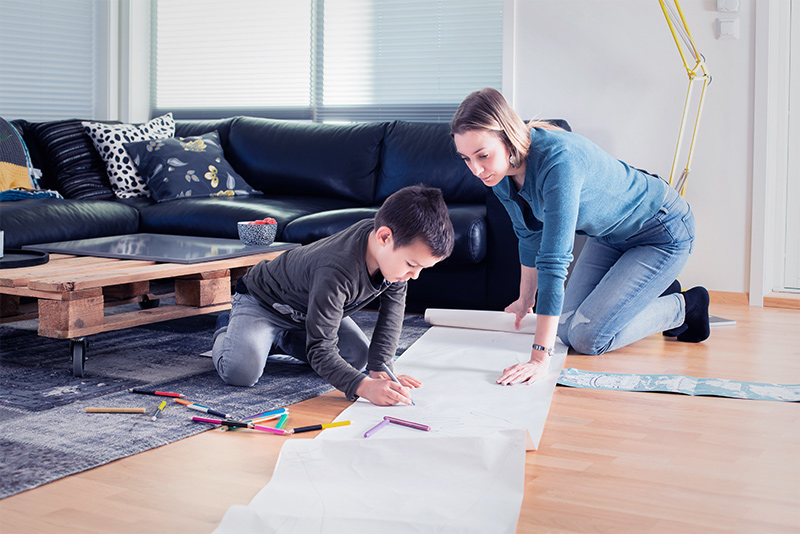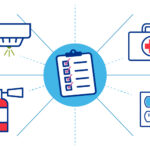Let them play: Why free play is crucial for kids

As the school season winds down, you may be wondering how to keep your kids busy if they’re home all day.
Consider letting them play.
What is free play?
Free play is any type of unstructured play that is directed by the child. It helps children develop their imaginations while experiencing and exploring the world around them.
Samantha Swankowski, a certified child life specialist at Boston Children’s Hospital, says providing time for free play is important, especially for younger kids.
Don’t discount play
“Many people think of play as frivolous, and not as important as sitting in school. But we know that play teaches kids how to learn, and works on their executive functioning skills,” says Swankowski. “If they are given the opportunity for free play, there are a lot of educational pieces that kids are taking away from it.”
For example, she says playing teaches kids how to problem-solve, how to focus on a task, how to make plans, and how to figure things out on their own.
She says play also buffers adversity and reduces anxiety. “Especially in these times, when everyone is under so much stress, play really becomes an avenue for kids to process their experiences and express their emotions,” says Swankowski.
In addition, she says play teaches kids many other skills they will use throughout their lifetime, including:
- using their imagination
- building curiosity
- developing language skills
- negotiating rules
- learning empathy
- learning how to take turns
Ways to encourage free play
One of the best things about free play is that it doesn’t have to cost a lot, if anything. “Free play is really about providing an opportunity for kids to play and let them be the ones that make it happen,” says Swankowski. “It doesn’t have to involve expensive toys, in fact, simple toys or household things, like pots and pans or boxes, are best to let kids’ imaginations blossom.”
She offers these ideas for free play:
- Role play and dress up. Letting your child pretend to cook, work in a coffee shop or office, or be the teacher can help them make sense of the world around them. It also gives them an opportunity to try out roles to find what they like to do. Kitchen equipment, basic office supplies, old clothes, and other things you have around the house are all good for these types of play.
- Building and creating. “Open-ended materials, like blocks, magnet tiles, and Legos are all great for letting kids build,” says Swankowski. She says you can also use things you have around the house, such as packing boxes or pillows and cushions to build a fort. Kids also love water play, sandboxes, or a just a big bin filled with rice or beans for a sensory experience.
- Outside play. Try to balance time playing inside with time outside. “Not only are kids more likely to develop their gross motor skills outside by climbing, running, and jumping, but being outside in nature can also help improve kids’ moods,” says Swankowski. She says it’s also a safe place for them to take risks, which helps build confidence. You can also make time outside educational, by letting them collect and observe things in nature, or organizing a scavenger hunt, where they need to find items that start with a certain letter or color.
- Creating stories. Kids can take stuffed animals, dolls, or puppets and make up their own stories or theater show. They can even write out their own tickets and make posters for it.
- Drawing, painting, and crafts. Keep a supply of simple art materials — like crayons, glue, chalk, ribbons, toilet paper rolls, and empty boxes— they let kids use those materials to make whatever they want. ”One of my favorite things is to take a big roll of paper and have kids roll it out and draw on it,” says Swankowski. “They can draw what they’re feeling or trace their body and decorate themselves.”
When to encourage free play
While Swankowski says there’s not really a set amount of time that kids should spend on free play each day, watch your kids for cues that they might need a break from other tasks.
“If your child is having a hard time focusing, is being fidgety, not getting along with siblings, or acting out, a lot of times their behavior is telling us something that they can’t necessarily articulate,” she says. “This is a good time to take a break from the computer and get some of that energy out with free play, and just allow them to experience joy.”
And while your kids are playing, take a moment to join them. “Parents can get really busy, but spend some time at your child’s level, engaging with them, finding out what they like, and how they’re feeling,” says Swankowski. “Playing together is a great way for kids to bond with their caregivers.”
Learn more about Boston Children’s.
Related Posts :
-

Your child's imaginary friend is more than a good buddy
You can’t hear stuffed toys talking. You can't see pretend companions coming to life. But your child probably wouldn’...
-

Childproofing your home: A checklist for parents
Bumps and bruises are a part of growing up. But serious injuries can cause lasting damage. By making a few ...
-

Babies and screen time: New research calls for caution
If you’re a parent, you’ve probably been there. You have a baby howling for attention, but you need ...
-

Bullying at all ages: How to spot the signs and support your child
According to the National Center for Educational Statistics, nearly a quarter of students ages 12 to 18 reported being bullied at school ...





